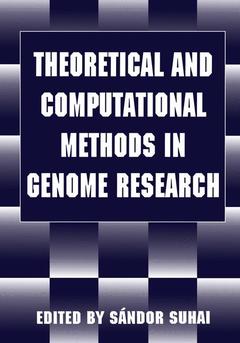The application ofcomputational methods to solve scientific and practical problems in genome research created a new interdisciplinary area that transcends boundaries tradi tionally separating genetics, biology, mathematics, physics, and computer science. Com puters have, of course, been intensively used in the field of life sciences for many years, even before genome research started, to store and analyze DNA or protein sequences; to explore and model the three-dimensional structure, the dynamics, and the function of biopolymers; to compute genetic linkage or evolutionary processes; and more. The rapid development of new molecular and genetic technologies, combined with ambitious goals to explore the structure and function ofgenomes ofhigher organisms, has generated, how ever, not only a huge and exponentially increasing body of data but also a new class of scientific questions. The nature and complexity of these questions will also require, be yond establishing a new kind ofalliance between experimental and theoretical disciplines, the development of new generations both in computer software and hardware technolo gies. New theoretical procedures, combined with powerful computational facilities, will substantially extend the horizon of problems that genome research can attack with suc cess. Many of us still feel that computational models rationalizing experimental findings in genome research fulfill their promises more slowly than desired. There is also an uncer tainty concerning the real position of a "theoretical genome research" in the network of established disciplines integrating their efforts in this field.




